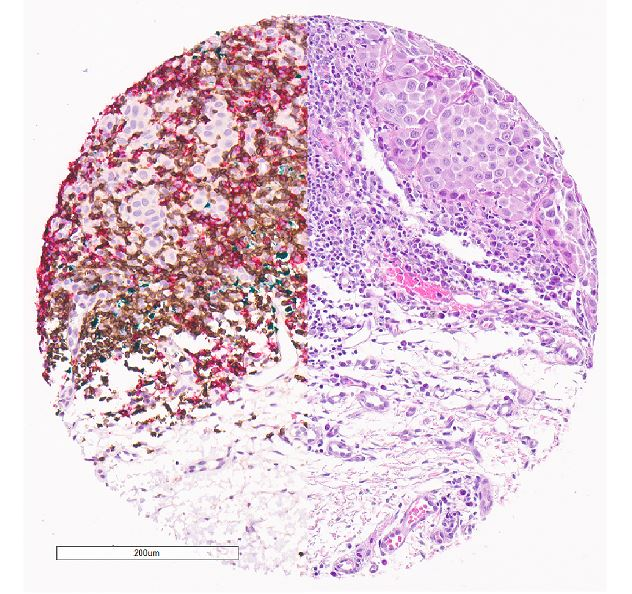Molecular and Advanced Pathology Core (MAPcore): A Translational Research Core Platform for UBC
Supporting a collaborative culture, MAPcore has been developed to be highly complementary to other infrastructure, particularly other research cores being developed within the Academy of Translational Medicine. The power of the MAPcore laboratory to assess features in cancer and other disease tissues derives from our state-of-the-art equipment funded by the Canadian Foundation for Innovation, the access to archival pathological material including normal tissue samples from the Vancouver General Hospital (VGH), and most importantly, the highly trained team of technologists and pathologists located at VGH and neighboring institutions, such as BC Cancer.
Led by Drs. David Huntsman, Torsten Nielsen, and David Schaeffer, MAPcore was developed by combining the Genetic Pathology Evaluation Centre (GPEC) with the Molecular Pathology Research Lab (MolPath) of VGH and empowered by new space made available within the Jack Bell Research Centre by the VCHRI. Over the last 20 years, GPEC has been very successful in using immunohistochemical analysis of tumours to validate gene expression profiling discoveries and linking it to patient outcomes to lead to real changes that can improve clinical care. Through MAPcore, we have further developed our capacity to include multiplex immunohistochemistry, immunofluorescence, and Nanostring GeoMx digital spatial profiling services to be able to better study the heterogeneity of disease tissues at the level of single cell genomics and proteomics with a spatial context. By providing key spatial omics services, MAPcore aims to bridge the gap between validating complex disease biomarker discoveries and their application as clinical diagnostic or therapeutic targets. By building more multiplexed approaches, we are able to target a larger number of biomarkers to more efficiently translate ideas into improvements for patients.
Since our inception in February 2021, we are proud to be moving forward with some exciting projects and collaborations. As the medical field and the world move towards digitalization, MAPcore, in collaboration with Dr. Ali Bashashati and others, aims to offer automated image analysis and AI-based analysis of tissue samples stained with multiplex immunohistochemistry and immunofluorescence panels. In addition, we are engaged in spatially-resolved transcriptomics projects, Nature’s Method of the Year 2020, using the Nanostring GeoMx Digital Spatial Profiler to study breast cancer and neural pathology. MAPcore provides an opportunity for trainees and research focused pathologists to build their careers and to provide support for young faculty through mentorship and availability of advanced techniques and modern technology. We are really excited by the way Dr. Lien Hoang has embraced this opportunity and is using MAPcore to build a research program in cancer of the vulva.

Past, present and future medicine will be all dependent on diagnostic information to be successful. As treatment options for serious and complex conditions, such as cancer, increase, the need for multiple accurate biomarkers has never been higher. Built from a team that have worked together for 20 years to develop and validate the current biomarkers used for the diagnosis of gynecologic, sarcomas, and other cancers, MAPcore represents a tremendous opportunity for our pathology community to accelerate and advance research. Through the UBC Strategic Investment Fund, we’ve built our laboratory as a research core and have developed the business aspects of the lab to better serve the research community. As a dynamic facility, we look forward to creating partnerships and working with groups to develop more new technologies and generate more opportunities to continue using MAPcore as a foundation for translational medicine.



